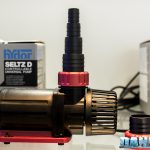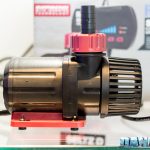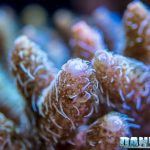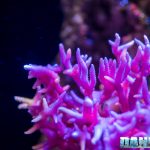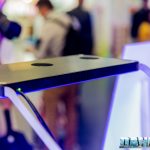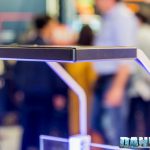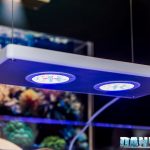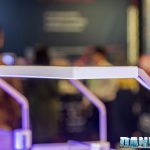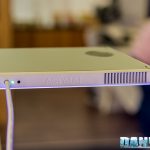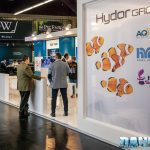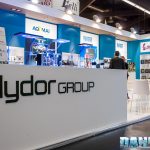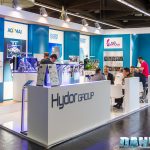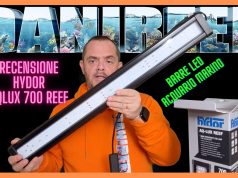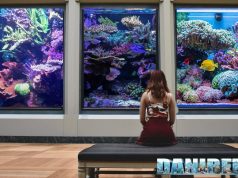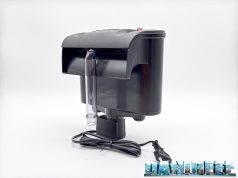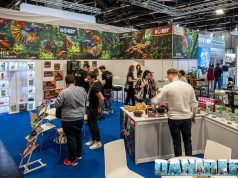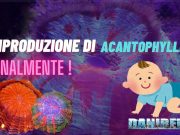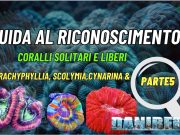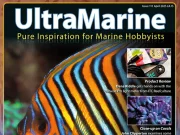 Hydor as well enters the controllable pumps group with his Hydor Seltz D.
Hydor as well enters the controllable pumps group with his Hydor Seltz D.
This article is also available in: ![]() italiano
italiano
We’ve been waiting for a Hydor revolution concerning return pumps for several years. And the revoltion has finally come, with the new Seltz D debut. Even if it can be controlled through line-controllers, the pump works by alternating current, not direct current as one could have thought at first sight.
The Seltz D is a 6 pole pump and it should therefore have a more linear functioning, and smoother power ups and arrests. The controller allows an intensity variation and the possibility of putting the pump on hold to feed the fish.
To this day, the possibility of controlling the pump from everywhere through the cloud is still lacking. But this is not an indispensable feature, in all honesty. Especially when an alternating current controllable pump should have an extremely moderate price, since it doesn’t have to bear an inverter to switch from alternating to direct current.
 Above you can see the pump flow and the controller in action. We have high expectations for this pump and can’t wait to try it out, for us and for you.
Above you can see the pump flow and the controller in action. We have high expectations for this pump and can’t wait to try it out, for us and for you.
Hydor Seltz D Technical Characteritics
There are 3 pumps going from 6.000 to 12.000 litres an hour flow rate. Let’s see all of the new return pumps’s technical characteristics.
| Consumption | Max head | Flow rate | |
| Seltz D 1600/6000 | 60 watt | 4,2 m | 6.000 l/h |
| Seltz D 2400/9000 | 75 watt | 4,6 m | 9.000 l/h |
| Seltz D 3200/12000 | 90 watt | 4,8 m | 12.000 l/h |
.
We appreciated how engineer Valerio Bresolin personally told us about it. His enthusiasm in introducing this pump, which Hydor invested a lot in, seeps trough his words.
The new Aqamai LRS ceiling lights
Inside the booth there were two set ups of aquariums, a marine one and a fresh water one, to show Aqamai‘s performances live.
The marine aquarium relied on a Aqamai LRM ceiling light (review) and a Aqamai KPM mobility pump (presentation).
Here you can see the gorgeous fresh water aquarium prepared by ITAU‘s Samuele Gamberini.
In the booth there were also several Aqamai LRM ceiling lights for viewing, in black and white livery. Splendid as well.
But the real standout regarding Aqamai was the introduction of the new Aqamai LRS ceiling light. Basically a cut-in-half LRM.
 Gorgeous, consisting of 15 leds, 3 White Hot, 1 UV, 2 Indigo, 3 Royal Blue, 3 Blue, 1 Green, 1 Red A e 1 Red B. Consumption is of 50 watts, exactly half of its big sister LRM.
Gorgeous, consisting of 15 leds, 3 White Hot, 1 UV, 2 Indigo, 3 Royal Blue, 3 Blue, 1 Green, 1 Red A e 1 Red B. Consumption is of 50 watts, exactly half of its big sister LRM.
 They are particularly indicated for not too pushed minireef, since if you want more you can obviously get the LRM, or for small dimension nanoreef.
They are particularly indicated for not too pushed minireef, since if you want more you can obviously get the LRM, or for small dimension nanoreef.
Its declared output is extremely promising, with a maximum value of 69,5 micromoli/m2s, measured at a distance of 60 cm.
References
For more information about Hydor and Aqamai products you should check their official websites. In addition to this, we invite you to read our Editorial about the exhibition to learn about our point of view about the 36th Interzoo edition (2018) and to consult the links to all of the articles about the booths we have visited to date:







